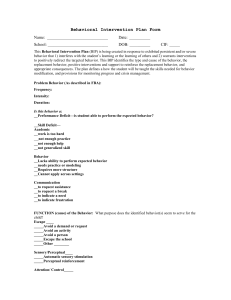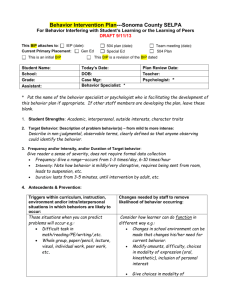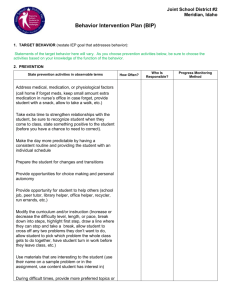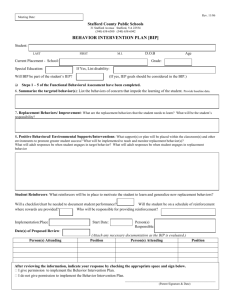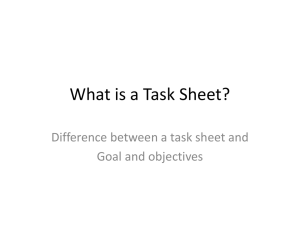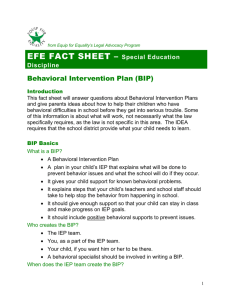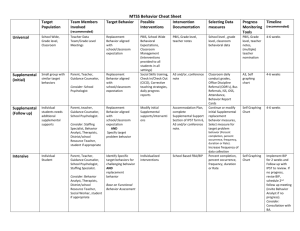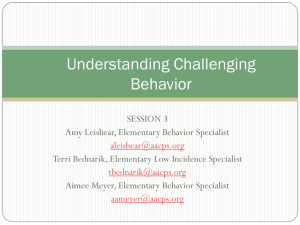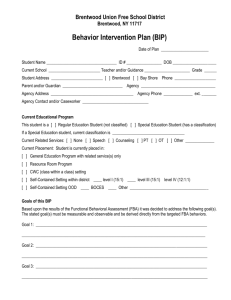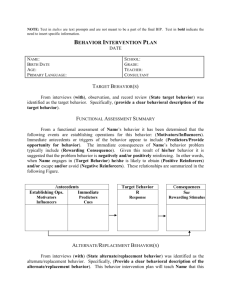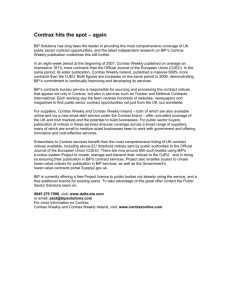Behavior Intervention Plan
advertisement
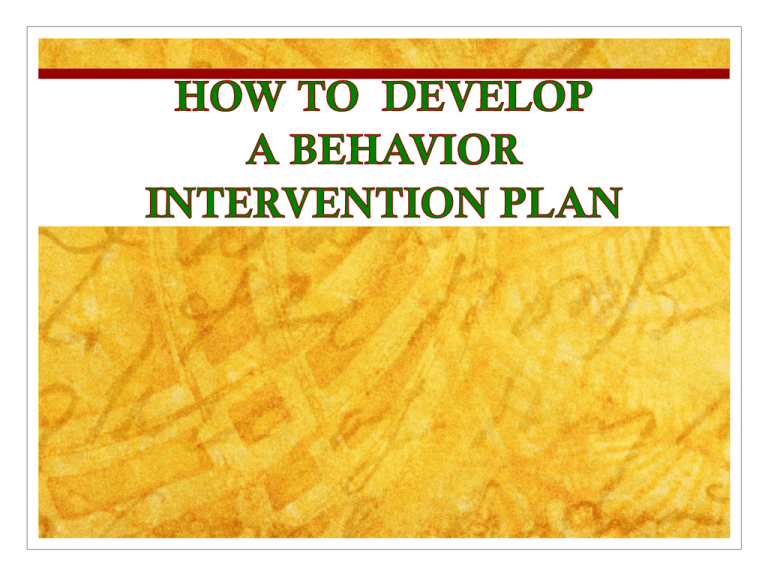
If you fail to plan…. Behavior Intervention Plan (BIP) Meeting What are some of the components that make up the Behavior Intervention Plans you have developed? The BIP lays out how the Behavior Response Team (BRT), which includes the IEP team, will help improve difficult behaviors that is inhibit academic success. The BIP takes the observations made in the FBA and turns them into a concrete plan of action for encouraging appropriate behavior. This includes: baseline data on targeted behaviors, behavioral triggers, function of the behavior, consequences, hypothesis, replacement behaviors, and reinforcement program (rewards, motivators, preferences) etc. 1. Select the top behavior targeted for behavior intervention from the FBA. 2. Review the baseline for the targeted behavior. Example: Johnny blurts out loudly 25 times per hour. 3. Set a specific measureable goal that addresses the frequency, intensity, and duration of the targeted behavior. Example: Johnny will reduce loud blurting to 10 times per hour. What is a Replacement Behavior? A replacement behavior is a substitute behavior that is socially acceptable and one capable of reaching their goal in a positive way. Describe the Replacement Behavior. Example: Johnny will raise his hand and wait for permission to speak in place of blurting out loudly. Describe how the new behavior will be reinforced and how often reinforcement will be given. Example: Avoid reprimanding Johnny when he blurts loudly, ignore or redirect it instead, then give positive reinforcement as soon as he raises his hand, demonstrating the replacement behavior. Note: SCKSEC strongly supports current research, including our own adopted Mandt philosophy, which identifies the positive consequences as far more effective than negative consequences. Select the Implementation Tool: the chart or form selected to track and document targeted behaviors, to determine progress towards the goal. Example: With teacher prompts, Johnny will check himself every 5 minutes and circle a “Yes” if he is raising his hand before blurting out loudly. He will circle a “No” if he is not raising his hand and waiting for permission to speak. See Packet of examples for ideas on Implementation Tools. Facilitate the Plan Determine the “W’s” of the plan: Who – Who will be involved in facilitating the plan and communicate it with all staff involved. Example: The Primary Resource Teacher is responsible for facilitating the plan. Every person the student has contact with will be involved in implementing the plan, including P.E., Music, Library, Hall, Playground, and Lunchroom Monitors etc. When and Where – Determine the appropriate environmental settings where the plan is to be used. Example: Does the plan need to be implemented in all classes? Implement the Plan Once the BIP is developed and communicated, determine the start date to begin the plan. Schedule a follow-up meeting within 3 weeks following the implementation date. Begin the plan. The Primary Resource Teacher responsible should follow-up throughout the first week of implementation to determine the consistency of the plan. Follow-Up Meeting After the plan has been in place and data has been collected on the Implementation Tool, all members of the BRT return to the table to review the data and modify the plan as needed. BIP Flow Chart Goal Follow-up Meeting Implementation Tool Replacement Behavior Reinforcement Interval BIP Review What are the parts of the Behavior Intervention Plan? In your own words, explain why Behavior Intervention Plans are necessary. What questions do you have about developing Behavior Intervention Plans?
